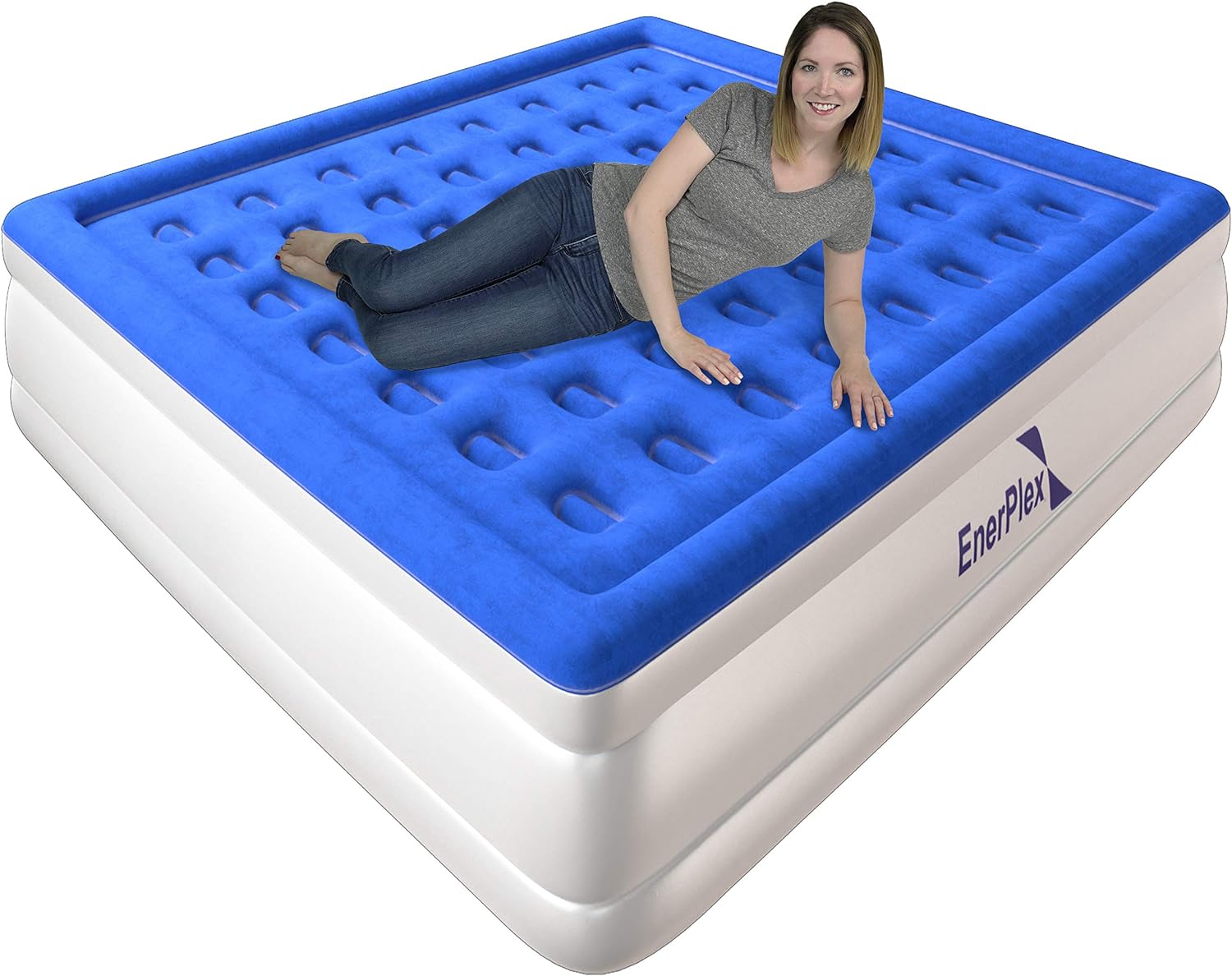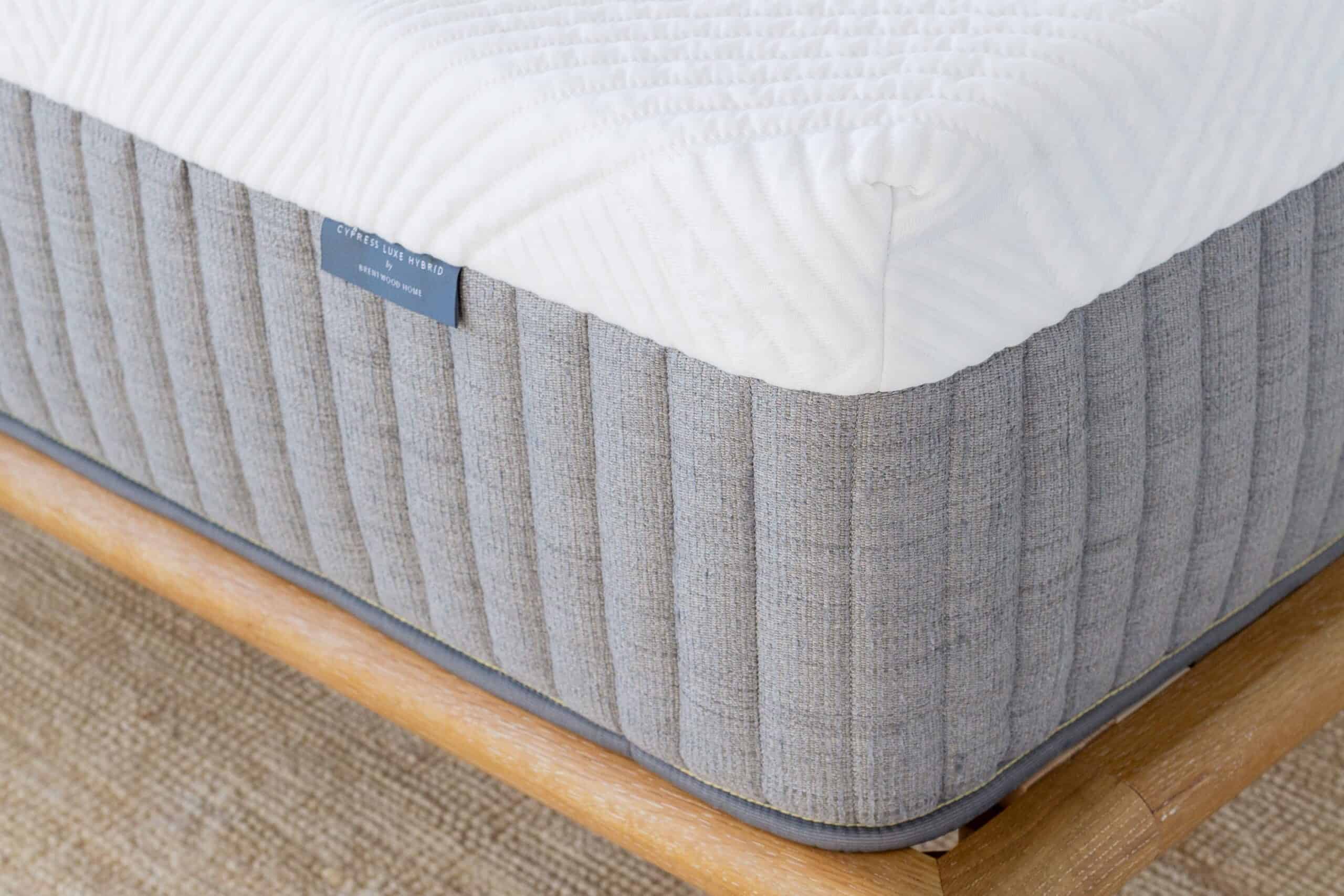Home>Furniture>Bedroom Furniture>How To Know When An Air Mattress Is Full


Bedroom Furniture
How To Know When An Air Mattress Is Full
Modified: May 6, 2024
Learn how to determine if an air mattress is fully inflated with our expert guide on bedroom furniture. Ensure a comfortable and restful sleep experience.
(Many of the links in this article redirect to a specific reviewed product. Your purchase of these products through affiliate links helps to generate commission for Storables.com, at no extra cost. Learn more)
Introduction
Welcome to our comprehensive guide on how to know when an air mattress is full. Air mattresses are a popular choice for providing a comfortable sleeping surface, whether it’s for camping trips, guests staying over, or even as a temporary bed in your own home. However, one common challenge that many air mattress users face is knowing when the mattress is properly inflated and ready for use.
Knowing when an air mattress is full is important because an under-inflated mattress can be uncomfortable to sleep on, while an over-inflated mattress can pose a risk of bursting. In this article, we will walk you through step-by-step instructions on how to ensure your air mattress is properly inflated, so you can enjoy a restful night’s sleep.
Without further ado, let’s dive into the details and learn how to determine when an air mattress is just right!
Key Takeaways:
- Ensure your air mattress is fully inflated by preparing, inflating, and checking air pressure. Regular monitoring and maintenance will maximize comfort and longevity.
- Listen for escaping air, conduct a physical examination, and test firmness to ensure optimal comfort. Monitor the mattress throughout the night for uninterrupted sleep.
Read more: How Big Is A Full Air Mattress
Step 1: Preparing the air mattress
Before inflating your air mattress, it’s important to properly prepare it. This will help ensure a smooth and accurate inflation process. Follow these steps to prepare your air mattress:
- Clean the mattress: Start by removing any dust, debris, or objects from the surface of the air mattress. Use a soft cloth or vacuum cleaner to gently clean the mattress, ensuring there are no sharp objects that could potentially damage it during inflation.
- Check for leaks: Carefully inspect the mattress for any signs of leaks or punctures. This can be done by visually inspecting the surface and feeling for any areas that may have lost air. If you notice any leaks, it’s best to patch them up before proceeding with the inflation process. Most air mattresses come with a repair kit that includes patches and adhesive, making the repair process quick and easy.
- Choose a suitable location: Select a suitable location where you plan to inflate the air mattress. Ensure the area is clean and free from any sharp objects or potential hazards that could cause damage to the mattress. This will help ensure a safe and hassle-free inflation process.
- Clear the space: Before beginning the inflation process, make sure you have enough space to fully expand the air mattress. Remove any furniture or obstacles that may obstruct the mattress from fully expanding. This will allow for a more accurate gauge of when the mattress is fully inflated.
By properly preparing your air mattress, you can minimize the risk of damage and ensure a successful inflation experience. Now that your mattress is ready, let’s move on to the next step: inflating the air mattress.
Step 2: Inflating the air mattress
Now that you have prepared your air mattress, it’s time to start the inflation process. Follow these steps to effectively inflate your air mattress:
- Locate the air valve: Identify the air valve on your mattress. It is usually located on the side or bottom of the mattress.
- Attach the pump: If your air mattress came with a built-in pump, simply connect it to the air valve. If not, you can use an external electric pump or a manual pump to inflate the mattress. Make sure the pump is securely attached to the valve to prevent any air leakage during the inflation process.
- Start the inflation: Turn on the pump and begin inflating the air mattress. Follow the instructions provided with the pump for the optimal inflation settings. It’s recommended to start with a lower pressure and gradually increase it to prevent over-inflating.
- Monitor the progress: As the mattress inflates, keep an eye on its size and firmness. Pay attention to any unusual sounds or signs of air leakage. This will help you gauge the progress and ensure that the mattress is inflating evenly.
- Test the firmness: Periodically pause the inflation process to test the firmness of the mattress. Gently press down on the surface to check if it feels adequately firm. If the mattress feels too soft or sags under pressure, continue inflating until the desired firmness is achieved.
- Stop inflating: Once the air mattress reaches the desired firmness level, turn off the pump and disconnect it from the valve. If you are using an external pump, make sure to close the valve tightly to prevent any air from escaping.
By following these steps, you can effectively and safely inflate your air mattress to ensure a comfortable sleeping surface. Now that you have successfully inflated the mattress, let’s move on to the next step: checking air pressure.
Step 3: Checking air pressure
Checking the air pressure of your inflated air mattress is crucial to ensure optimal comfort and durability. Follow these steps to accurately assess the air pressure:
- Allow the mattress to settle: After inflating the mattress, give it some time to settle. This will allow the air to distribute evenly throughout the mattress.
- Use a pressure gauge: Use a pressure gauge to measure the air pressure inside the mattress. Simply insert the gauge into the air valve and read the pressure displayed on the gauge. Different types of air mattresses have different recommended air pressure ranges, so consult the manufacturer’s instructions to determine the ideal pressure for your specific mattress.
- Achieve the recommended pressure: If the air pressure reading is below the recommended range, you may need to add more air using the pump. On the other hand, if the pressure reading is above the recommended range, you might need to release some air by gently pressing down on the mattress while opening the valve slightly. It’s important to achieve the optimal air pressure to ensure a comfortable and supportive sleep surface.
- Recheck the pressure: After adjusting the air pressure, recheck the reading with the pressure gauge. Continue making small adjustments until the desired pressure is achieved.
By regularly checking and maintaining the proper air pressure, you can prolong the lifespan of your air mattress and ensure a comfortable sleeping experience. Now that you have checked the air pressure, let’s move on to the next step: listening for the sound of air escaping.
Step 4: Listening for the sound of air escaping
One common indicator of an underinflated air mattress is the sound of air escaping. Here’s how you can listen for and identify any escaping air:
- Find a quiet environment: Choose a quiet location where you can easily hear any sounds coming from the air mattress. This will help you in detecting even the faintest sounds of air escaping.
- Turn off any distractions: Turn off any fans, air conditioners, or other noise-producing devices in the vicinity. This will minimize background noise and enhance your ability to hear the sound of escaping air.
- Get closer to the mattress: Position yourself close to the surface of the air mattress. Place your ear near the mattress and listen carefully for any hissing or whistling sounds.
- Move around the mattress: Gently press down on different areas of the mattress, paying attention to any changes in sound. If you notice a particular spot where air is escaping, mark it for further inspection and potential repair.
- Inspect the marked area: Once you have identified the spot where air is escaping, carefully inspect that area for any visible holes, leaks, or punctures. Patch up any identified leaks using the repair kit provided with your air mattress or follow the manufacturer’s recommended repair process.
By listening for the sound of air escaping and promptly addressing any leaks, you can maintain the optimal air pressure in your mattress and ensure a comfortable sleeping surface. Now that you have listened for escaping air, let’s move on to the next step: conducting a physical examination of the mattress.
To know when an air mattress is full, listen for the sound of the motor stopping or check if the mattress feels firm and doesn’t sink when you press down on it.
Read more: What To Know When Buying A Mattress
Step 5: Conducting a physical examination
A physical examination of your air mattress can help you identify any visible signs of damage or wear and tear. Here’s how you can conduct a thorough inspection of your mattress:
- Inspect the surface: Carefully examine the surface of the air mattress for any visible tears, cuts, or abrasions. Run your hands along the surface to feel for any irregularities or rough spots that may indicate a potential problem.
- Check the seams: Pay close attention to the seams of the mattress, as they are common areas for damage to occur. Look for any loose threads, frayed edges, or signs of separation in the seams.
- Examine the valves: Inspect the air valves on the mattress to ensure they are in good condition and securely attached. Check for any signs of leakage or damage around the valve area.
- Look for mold or mildew: If you have stored your air mattress for an extended period, it’s important to check for any signs of mold or mildew growth. Thoroughly inspect the surface of the mattress for any discoloration, unusual smells, or visible signs of mold or mildew.
- Address any issues: If you notice any damage or issues during the examination, it’s essential to address them promptly. Depending on the severity of the problem, you may need to patch up small holes or tears, reinforce weak seams, or consider replacing the mattress if the damage is beyond repair.
By conducting a physical examination of your air mattress, you can proactively identify and address any potential problems before they affect your comfort and the durability of the mattress. Now that you have examined the mattress, let’s move on to the next step: testing the firmness and comfort level.
Step 6: Testing the firmness and comfort level
Testing the firmness and comfort level of your air mattress is essential to ensure a restful and comfortable sleep. Follow these steps to evaluate the firmness and comfort of your mattress:
- Lie down on the mattress: Take a moment to lie down on the mattress and get a feel for its firmness. Pay attention to how it supports your body and whether it feels too soft or too firm.
- Reposition yourself: Switch positions and lie on different areas of the mattress. This will allow you to assess if there are any uneven spots or sagging areas that may impact your comfort during sleep.
- Adjust the air pressure: If the mattress feels too firm, you can release a small amount of air to achieve a softer feel. Conversely, if the mattress feels too soft or lacks support, you can add more air to increase the firmness.
- Consider your personal preferences: Everyone has different preferences when it comes to mattress firmness. Take into account your own comfort preferences and any specific needs, such as back support or pressure relief.
- Find the optimal firmness: Experiment with different air pressure levels until you find the firmness that provides the most comfortable sleep surface for you. Remember, the ideal firmness level is subjective and may vary from person to person.
By testing the firmness and comfort level of your air mattress, you can make adjustments to ensure it meets your individual sleep preferences. Now that you have tested the comfort level, let’s move on to the final step: monitoring the air mattress throughout the night.
Step 7: Monitoring the air mattress throughout the night
Monitoring your air mattress throughout the night is important to ensure that it remains adequately inflated and comfortable for an uninterrupted sleep. Here’s how you can effectively monitor your mattress:
- Check for air loss: Before going to bed, take a moment to inspect the mattress for any signs of air loss. Look for any sagging or noticeable deflation that may require additional inflation.
- Adjust air pressure if necessary: If you notice any deflation or if the mattress feels less firm than desired, make any necessary adjustments to the air pressure. Add more air using the pump or release a small amount of air if the mattress feels too firm.
- Reposition on the mattress: Throughout the night, shift your position on the mattress to distribute your weight evenly. This can help prevent excessive strain on certain areas of the mattress and maintain its firmness and support.
- Listen for air leakage: In case you wake up during the night or in the morning, listen for any sounds of air escaping from the mattress. If you detect any, locate the source and attend to it as soon as possible to prevent further deflation.
- Inspect the mattress in the morning: When you wake up, take a moment to visually inspect the mattress for any signs of damage or air loss. Address any issues promptly to ensure the longevity of your air mattress.
By monitoring your air mattress throughout the night, you can address any potential issues promptly and maintain optimal comfort for a good night’s sleep. Now that you know how to monitor the mattress, let’s conclude this guide.
Conclusion
Inflating an air mattress to the proper level is crucial for a comfortable and restful sleep experience. By following the steps outlined in this guide, you can ensure that your air mattress is fully inflated and ready for use.
Remember to adequately prepare the mattress before inflation by cleaning it and checking for any leaks or damages. Use the appropriate pump or inflation method to inflate the mattress, paying attention to the recommended pressure guidelines. Regularly check and adjust the air pressure as needed to optimize the firmness and comfort level.
Additionally, listening for the sound of air escaping, conducting a physical examination, and monitoring the mattress throughout the night are important steps to identify any leaks or damages and address them promptly. By taking these proactive measures, you can extend the lifespan of your air mattress and maximize your sleeping comfort.
Whether you use an air mattress for camping, accommodating guests, or as a temporary bed at home, knowing when it’s properly inflated is essential. With this comprehensive guide, you now have the knowledge and tools to determine when your air mattress is full and ready for a peaceful night’s sleep.
So go ahead, inflate your air mattress with confidence, and enjoy the comfort and convenience it brings to your sleeping arrangements!
Now that you've mastered checking if your air mattress is full, you might be wondering about upgrading to a superior model. Our next article offers a rundown on some standout air mattresses for 2024, ensuring both comfort and durability. Whether you need a guest bed or a permanent sleep solution, this guide helps you find the perfect option tailored to your needs.
Frequently Asked Questions about How To Know When An Air Mattress Is Full
Was this page helpful?
At Storables.com, we guarantee accurate and reliable information. Our content, validated by Expert Board Contributors, is crafted following stringent Editorial Policies. We're committed to providing you with well-researched, expert-backed insights for all your informational needs.














